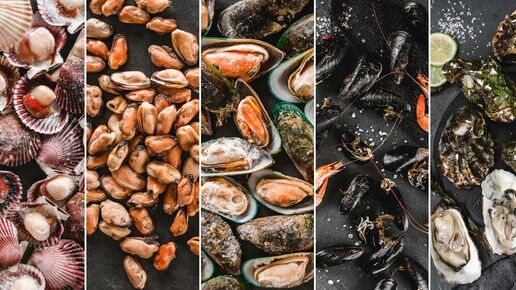Vibrio bacteria in seafood: increased risk due to climate change and antimicrobial resistance
The prevalence of Vibrio in seafood is expected to increase both globally and in Europe because of climate change, especially in low-salinity or brackish waters, according to EFSA’s latest assessment. Additionally, resistance to last-resort antibiotics is increasingly found in some Vibrio species.

EFSA's scientists have carried out an assessment of the public health aspects of Vibrio spp. related to the consumption of seafood. Vibrios are aquatic bacteria that can be found in seafood. Some strains are pathogenic and can cause gastroenteritis or severe infections. In a previous report (CLEFSA), EFSA’s experts analysed the possible effects climate change could have on a wide range of food safety-related issues, including Vibrio bacteria in seafood.
Climate change and Vibrio bacteria in seafood
FAQs
Vibrios are waterborne bacteria that mainly live in marine coastal waters and brackish areas (where rivers meet the sea) and thrive in temperate and warm waters with moderate salinity. They can cause gastroenteritis or severe infections in humans consuming raw or undercooked seafood/shellfish, such as oysters. Contact with water containing Vibrios can also cause wound and ear infections.
The bacterial group of Vibrio comprises several species that can cause Vibriosis. In the European Union, Vibrio parahaemolyticus, Vibrio vulnificus, and Vibrio cholerae are the species of highest relevance for public health regarding seafood consumption. V. parahaemolyticus can cause gastroenteritis in healthy individuals, while V. vulnificus and V. cholerae non-O1/non-O139 can lead to severe infections, sepsis, and death in vulnerable individuals.
- Vibrio parahaemolyticus was found in approximately 20% of the tested seafood samples, with one out of five positive samples containing pathogenic strains.
- Vibrio vulnificus was detected in around 6% of the tested seafood samples. All identified V. vulnificus strains are considered potentially pathogenic.
- Non-choleragenic V. cholerae was detected in about 4% of the tested seafood samples.
Vibrio bacteria can survive and thrive in various aquatic environments due to several factors. The most relevant are:
- Temperature: Vibrios grow optimally in warm conditions. Higher temperatures promote their presence and growth.
- Salinity: Vibrios require a certain salt concentration for optimal growth. This is why low-salinity/brackish waters (where rivers meet the sea) are at higher risk.
The presence of AMR in bacteria found in seafood and pathogenic for humans is of concern, due to its potential impact on public health.
EFSA’s latest assessment highlights that resistance to several antimicrobials, including those of last resort, was detected in studies on Vibrio spp. isolates found in seafood and/or from Vibrio spp. isolates causing foodborne infections in Europe. Due to the limited available evidence, experts recommend conducting a survey to gather comparable data.
Due to an increase in extreme weather events, like heatwaves, over the past 20 years, Europe has seen a rise in Vibrio infections. Warmer coastal waters have led to an expansion of areas where Vibrio bacteria can multiply, resulting in a higher risk of infections from the consumption of contaminated seafood. Regions that are particularly at risk include those with brackish or low-salinity waters (e.g., the Baltic Sea, Baltic and North Sea transitional waters, and the Black Sea) as well as coastal areas with large-river inflows.
In EFSA’s recent assessment, experts anticipate that the occurrence and levels of Vibrio in seafood will increase globally and in Europe, especially in low-salinity/brackish waters, due to the effects of climate change, such as coastal warming and extreme weather events like heatwaves.
To prevent and control Vibrio in seafood, maintaining the cold chain during processing, transportation, and storage is crucial, particularly for seafood intended to be consumed raw. Possible measures to reduce Vibrio are high pressure processing, irradiation and (flash) freezing followed by long-term frozen storage. Depuration, which involves placing live molluscs in tanks with clean, circulating seawater to filter out microbes, is recommended under controlled conditions for live oyster consumption. Recommendations for consumers include ensuring proper handling and cooking of seafood, and avoiding consumption of raw or undercooked products, especially for vulnerable individuals.
Experts recommend launching an EU-wide baseline survey for relevant Vibrio spp. in pertinent seafood products at primary production and retail as a key priority to gather additional and harmonised data. These data can then be used as reference to study the effects of climate change on the prevalence of Vibrio in seafood.
Links to science
How to contact us
EFSA Media Relations Office
Tel. +39 0521 036 149
E-mail: press [at] efsa.europa.eu (Press[at]efsa[dot]europa[dot]eu)
(Only if you are a member of the press)
Ask a Question Service
You have a question about EFSA’s work? Contact our Ask a Question service!